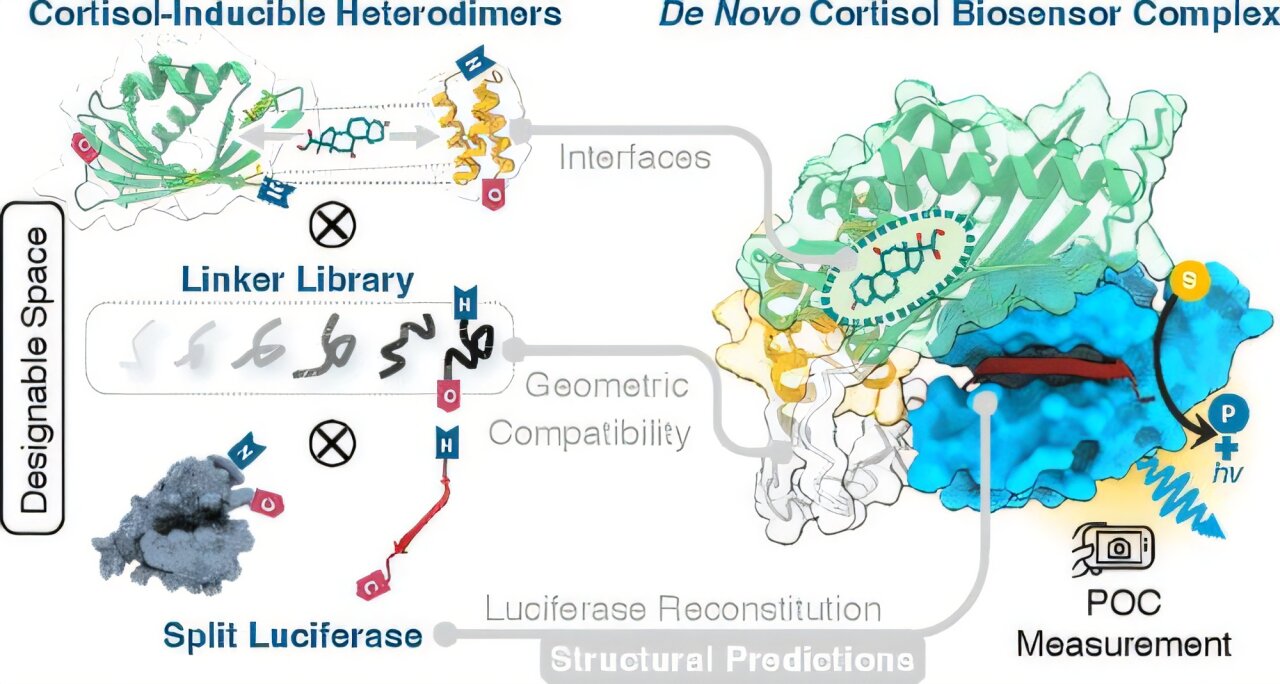Artificial Biosensor Measures Stress Hormone with Precision

The Role of Cortisol in the Body
Cortisol is a vital hormone that plays a significant role in regulating various essential bodily functions, such as blood pressure, metabolism, and the body's response to stress. When cortisol levels are imbalanced, it can lead to a range of health issues, including fatigue, weight gain, and even more severe conditions like Cushing’s syndrome or Addison’s disease. Monitoring cortisol levels is therefore crucial for maintaining overall health and identifying potential medical concerns early on.
A Breakthrough in Cortisol Testing
Traditionally, measuring cortisol levels has required visits to a doctor's office or clinical setting, where specialized equipment is used to analyze blood or urine samples. However, a recent advancement in biosensor technology is changing the way cortisol levels can be measured. This innovation introduces an artificial, luminescent sensor that can detect cortisol with greater accuracy and convenience than ever before.
The Development of the Artificial Biosensor
Andy Yeh, an assistant professor of biomolecular engineering at the University of California, Santa Cruz, has developed a groundbreaking biosensor that uses light to indicate cortisol levels in the body. This sensor binds with cortisol in either blood or urine and emits light, which can then be analyzed to determine the hormone’s concentration.
A study published in the Journal of the American Chemical Society highlights how this technique can effectively detect cortisol across all relevant levels in human health. Yeh’s research shows that the biosensor can be used in conjunction with a smartphone camera, enabling individuals to measure their cortisol levels at home or in a clinic without the need for expensive laboratory equipment. This development significantly expands access to accurate cortisol testing.
Designing from Scratch
Yeh is a leading expert in artificial protein design, a method that leverages AI-guided computation to create proteins from scratch. Unlike traditional methods that modify naturally occurring proteins, this approach allows for the creation of entirely new structures tailored to specific functions.
To develop a cortisol detection system, Yeh designed a protein-based biosensor that triggers two engineered proteins to come together at the molecular level when cortisol is present. This interaction results in light emission, with the intensity of the light directly correlating to the amount of cortisol detected. According to Yeh, this is the first example of a fully computationally designed biosensor capable of achieving high sensitivity and a wide dynamic range for detecting small molecule analytes.
Point-of-Care Testing Made Simple
The new diagnostic tool operates in a "mix and read" format, similar to the rapid tests used for detecting COVID-19. Users only need a drop of blood or urine, which is mixed with a solution containing the biosensor. A smartphone camera and a dedicated app can then interpret the light emitted, providing a direct measurement of cortisol levels.
"You can read the signal directly—the output of the sensor is light emissions, so essentially you can just take a picture of the test with your smartphone," Yeh explained. "Ideally, that's really field compatible."
Enhanced Sensitivity and Dynamic Range
One of the most significant advantages of Yeh’s biosensor is its exceptional sensitivity compared to traditional cortisol tests. Conventional methods often lack the ability to provide accurate quantitative results outside the normal cortisol range. In contrast, Yeh’s system offers a broader dynamic range, allowing for precise measurements of both healthy, low, and elevated cortisol levels.
"This sensor is very, very sensitive compared to the current standard methods used in the hospital," Yeh said. "The dynamic range is huge compared to the traditional assay."
Future Applications
Looking ahead, Yeh envisions that this technology could have broader applications beyond cortisol testing. It may be used in drug development or diagnostic settings to better understand and treat health issues related to cortisol imbalances. As this technology continues to evolve, it has the potential to revolutionize how we monitor and manage hormonal health.
Post a Comment for "Artificial Biosensor Measures Stress Hormone with Precision"
Post a Comment